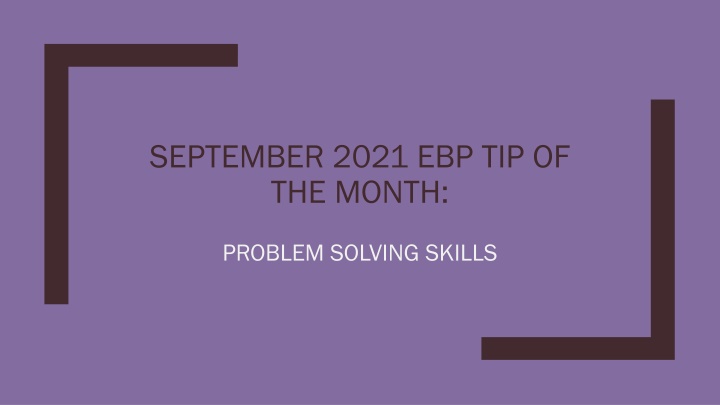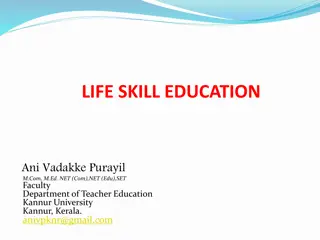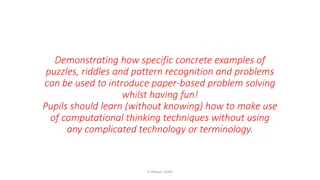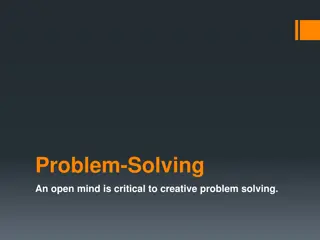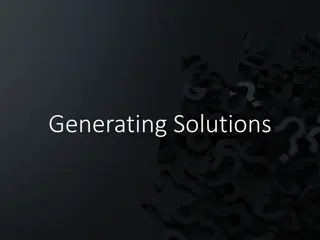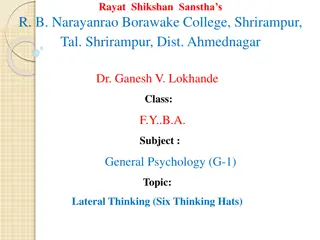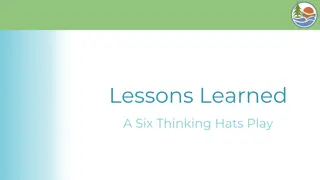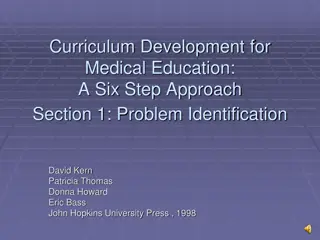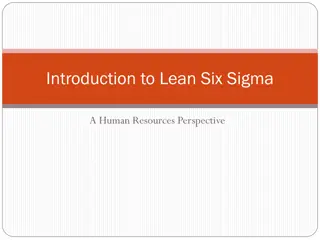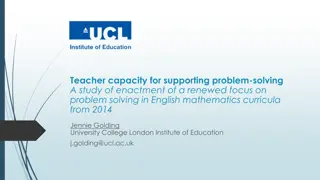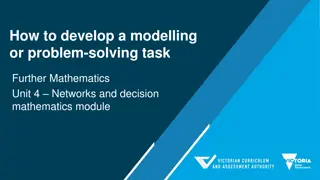Enhance Problem Solving Skills: Six Steps to Success
Identify, set goals, brainstorm solutions, assess consequences, and implement problem-solving strategies effectively. Learn the systematic approach to overcome challenging situations with practical tips to navigate obstacles and achieve desired outcomes.
Download Presentation

Please find below an Image/Link to download the presentation.
The content on the website is provided AS IS for your information and personal use only. It may not be sold, licensed, or shared on other websites without obtaining consent from the author.If you encounter any issues during the download, it is possible that the publisher has removed the file from their server.
You are allowed to download the files provided on this website for personal or commercial use, subject to the condition that they are used lawfully. All files are the property of their respective owners.
The content on the website is provided AS IS for your information and personal use only. It may not be sold, licensed, or shared on other websites without obtaining consent from the author.
E N D
Presentation Transcript
SEPTEMBER 2021 EBP TIP OF THE MONTH: PROBLEM SOLVING SKILLS
A problem is defined as a situation, circumstance, or behavior that causes you difficulty. A problematic situation may be not getting your way in a situation, conflict with another person, or having different expectations or goals from significant others (spouse, family, employer, PO, etc). Our thoughts, feelings, or beliefs can also cause us problems. It is an obstacle that prevents us from reaching our goal.
I. Problem solving is a systematic way of dealing with challenging situations The following are Six Steps to Problem Solving
Step 1: Identify the Problem Identifying the problem is a critical step in the problem solving process. The problem must be clearly stated based on factual information. Facts are events that actually happened or statements that can be proven. Be specific about the who, what, when of the problem. A good problem statement usually begins with I . Stating the facts will avoid blaming others and letting emotions take over.
Step 2: Identify the goal A goal statement clearly identifies what we want and/or what we want to avoid. The goal should be realistic, achievable, and positive. The goal statement should take into consideration factual information such as rules, terms and conditions, and whether it has been done before. If the goal is not realistic, achievable, and positive, the offender will be setting themselves up for disappointment or failure.
Step 3: Brainstorming/Identifying Solutions A solution is a course of action that will reach the goal. Offenders are encouraged to come up with as many solutions as possible without censorship. Having offenders pursue as many solutions as possible will help to minimize making an impulsive decision, having tunnel vision, and a habitual impulsive decision, having tunnel vision, and a habitual reaction to a problem. reaction to a problem. making an
Step 4: Identify the consequences In order to choose the best solution, identify the consequences to each solution. The purpose is to eliminate those solutions that may have negative consequences or does not meet your goal. Consideration is also given to how your decision will affect other people.
Step 5: Make the best choice and implement Select the solution that best leads to the goal. Be aware that some solutions may reach the goal, but have consequences that we want to avoid. Implement the best solution and develop an action plan. The action plan describes the steps that the offender will take.
Step 6: Evaluate the outcome The last step is to evaluate whether or not the goal was successfully met. If the goal was met, explain how you were successful in meeting the goal. If not, could you have done something different such modify the solution or select an entirely different solution from the list.
Using the Problem Solving Skills Showing clients how to use the Problem Solving Skills is a great way to teach pro-social behaviors. Next time a client comes with a problem. Use the 6 Steps. If the solution is behavioral, you may role play the solution and have the client practice the solution with you.
